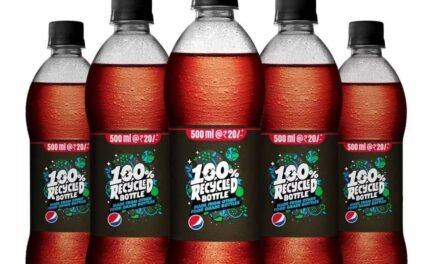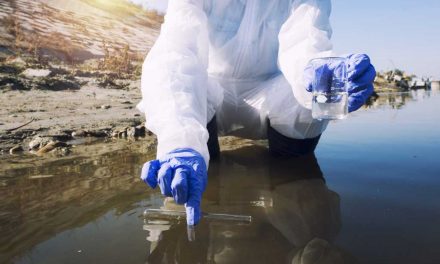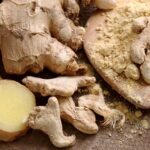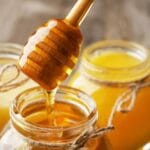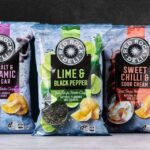Plastic packaging being used is non-biodegradable as it causes ecological imbalance and aesthetic deterioration of nature. There is, therefore, a great need to develop environmentally friendly biodegradable packaging materials that do not cause environmental pollution, writes Saurabh Sharma.
Table of Contents
The need for packaging can be linked to the progress of civilization and the need to preserve perishables for a longer period of time. Plastic packaging being used is non-biodegradable as it causes ecological imbalance and aesthetic deterioration of nature. There is, therefore, a great need to develop environmentally friendly biodegradable packaging materials that do not cause environmental pollution. Biodegradable packaging materials neither promote any waste disposal problems nor affect the trade and safety of the food product. This article highlights developments that have taken place in this area.
Biodegradable packaging includes biodegradable films and coatings synthesized from organic materials and microbial polymers. A biodegradable product has a unique characteristic in which microbes such as bacteria, fungi and algae can decompose the rugged polymer structure. American Society for Testing and Material (ASTM) declared that any product claiming to be biodegradable must completely decompose into CO2 and water within a 180 day period (Thorat and Wadikar, 2000).
Biodegradable Packaging Materials
Microbial Polymers
Microbial Polymers are synthesized by microbes and are biodegradable and can be used for packaging purpose. Under imbalanced growth conditions, some bacteria like Bacillus Spp., Azotobacter Spp., Clostridium Spp., Thiothrix Spp, etc. shift from their original physiological pathways and synthesize different carbon reserve compounds such as PHA (Poly-b-Hydroxy Alkonates). Among them, PHB (Poly-b-Hydroxy Butyrate) can become very good substitute for synthetic polymers (Pattnaik et al., 1996).
- England’s Zeneca KKK is commercializing a co-polymer of hydroxybutyrate (HB) & Hydroxy-valerate (HV) under the trade name BIOPOL (Young, 1995). This copolymer was obtained from the soil bacteria Alcaligenes eutrophus (Pattnaik et al., 1996).
- Pullulan, a polymer of maltotriose synthesized by Aureobasidium pullulan can be exploited as biodegradable packaging material. Pullulan has excellent gloss and flexibility with moderate mechanical properties. The pullulan films obtained have oxygen permeability (0. 66cc/m2/24 hrs) at 270C temperature (Thorat, 1997).
- Bizet et al., (1995) received a patent for biodegradable film manufactured from fungal mycelium processed by drying and pressing and was applied for the packaging of foods like soft cheese.
Edible Films and Coatings
Edible films and coatings are simply defined as thin continuous layer of edible material formed on, placed on or between foods or food components (Torres, 1994). Edible packaging refers to the use of edible films, coatings, pouches, bags and other containers as a means of ensuring the safe delivery of food products to the consumer in a sound condition (Mc Hugh and Krochta, 1994). These edible films and coatings can also act as carrier of antioxidant, flavour and bacteriostats and can improve the mechanical integrity of food products (Pathania, 2000). Since, package is an integral part of the whole food product, therefore, the composition of the edible packaging must meet with the following specific functional requirements:
- Neutral organoleptic properties (clear, transparent, odourless, tasteless etc.)
- Water vapour tightness to prevent desiccation.
- Good barrier against microbial invasion to reduce spoilage and decay.
- Predetermined permeability to water vapour, O2 and CO2 to have complete control over the water and gas exchanges between the product and surrounding atmosphere.
- Good mechanical characteristics (like tensile and yield strength, Spencer impact elongation, etc.) to impart abuse resistence.
- Enhance the surface appearance (e.g. brilliance) and tactile characteristics (e.g. reduced stickiness) of foods (Kaushik, 1999).
Formulation Technology of Edible Films and Coatings
The formation of edible films and coatings take place by simple coacervation, complex coacervation, thermal gelation or precipitation (Thirupathi et al., 2000).
Simple coacervation: Hydrocolloid dispersed in water is precipitated or it undergoes a phase change after solvent evaporation (drying), after the addition of a hydrosoluble non-electrolyte in which the hydrocolloid is insoluble (e. g. ethanol) or after pH adjustment or the addition of an electrolyte which induces salting out or cross-linking.
Complex caocervation: Hydrocolloid solutions with opposite electron charges are mixed, thus causing interaction and precipitation of the polymer complex.
Gelation or thermal coagulation: Heating of the macromolecule (which leads to its denaturation) is followed by gelation (e.g. protein such as albumin)or precipitation or even cooling of a hydrocolloid dispersion causing gelation.
The different sources of edible films are given as under:
Polysaccharide Films
Alginates, pectin, carragenan, starch hydrolysates, and cellulose derivatives are different polysaccharides that can be used for edible coatings.
- Alginates are the salts of alginic acid extracted from brown seaweed and react with several polyvalent cations to form gels and this is useful in film formation. Calcium ions are the most effective gelling agent. The gelatinous alginate coating was effective in various meats such as poultry parts and lamb carcass (Allen et al., 1963).
- Carragenan is an extract from the red-seaweed harvested along the coasts of the Philippines, Indonesia, Canada, and Chile (Rasmussen, 1994). It consists of a family of sulfonated polysaccharides of D-glucose and 3, 6-anhydro-D-galactose. Upon cooling the warm aqueous solution of the polymer, gelatin occurs presumably by the formation of a double helix structure to yield a 3D-polymer network (Glicksman, 1983). Carragenan can be used as a food coating that acts as a sacrificing agent to retard moisture loss form the enrobed food (Kestner and Fennema, 1986).
- Pectin is a complex group of structural polysaccharides found in the middle lamella of plant cells. It is composed of D-galacturonic acid polymers with varying degree of methyl esterification. Chemical de-esterification yields low-methoxy pectins which are capable of forming gels in the presence of calcium ions (Schultz et al., 1949).
- Starch: Different sources of starch e. g. corn, potato, cassava, and cereals etc. can be used. Normal corn-starch consists of 25% amylose and 75% amylopectin. Mutant varieties of corn were produced which contain up to 85%amylose (Whistler and Daniel, 1985). These high amylose starches can be utilized for edible film formation. The films were transparent and had very low R. H (Rankin et al., 1958). The mechanical properties of starch films that have potential as packaging materials depend on water content and humidity (Bader and Goritz, 1994).
- Cellulose derivatives: Cellulose is composed of D-glucose units linked through b-1, 4 glycosidic bonds. The tight and crystalline structure of cellulose can be made water-soluble by treating with alkali to swell the structure followed by the reaction with chloroacetic acid, methyl chloride or propylene oxide to yield Carboxy Methyl Cellulose (CMC), Methyl Cellulose (MC), Hydroxy Propyl Methyl Cellulose (HPMC), Hydroxy Propyl Cellulose (HPC). The anionic CMC and non-ionic MC, HPMC and HPC possess excellent film-forming characteristics (Krumel and Lindsay, 1976).
Generally, most of the polysaccharide films have good mechanical properties but poor moisture and oxygen barrier characteristics that restrict their use in high moisture/high-fat food products. Some polysaccharides are incorporated in lipid-based edible films or coatings as a structural matrix to impart structural integrity and durability (Kaushik, 1999).
Lipid Films
Lipid components that are used as packaging include natural waxes such as carnuba wax, candelilla wax, rice bran wax, and beeswax; vegetable oils such as corn oil, soyabean oil, palm oil and acetylated monoglycerides (Baldwin et al., 1997). The primary purpose of the lipid coating is to block the transport of moisture e. g. waxing of fruits (Kestner and Fenemma, 1986). Wax and oil coatings have been shown to retard desiccation in apples, mango, coconut, banana, papaya, peaches, carrots, turnips, peppers, tomatoes, and cucumbers (Baldwin, 1994; Paull and Chen, 1989).
Waxes are most effective at blocking moisture migration with paraffin wax being the most resistant followed by beeswax (Schultz et al., 1949). Paredes-Lopez et al. (1947) coated limes with an oil-in-water emulsion of candelilla wax and found that water loss was reduced to half of the non coated limes.
Acetylation of glycerol monostearate (GMS) by its reaction with acetic anhydride yield stearodiacetin. This acetylated monoglyceride displays the unique characteristics of solidifying from the molten state into flexible wax-like solid (Feuge et al., 1953). Acetylated monoglyceride coatings were applied to poultry and meat cuts to protect against dehydration during storage (Zabik and Dawson, 1963).
These coatings can be stretched up to 800% of its original length and the highly stretchable, solid-phase acetylated monoglyceride exists in the b-polymorphic form (Jackson and Lutton, 1952). Because of their inherent flexibility, acetylated monoglycerides are sometimes incorporated into wax to impart added plasticity without materially decreasing the resistance of coating to the moisture transport. This approach is particularly useful when wax coatings are used in food stored at low temperature (Kestner and Fenemma, 1986).
Protein Films
Edible films can be made from different polypeptides or protein system e.g. milk proteins (casein and whey proteins), wheat proteins, corn proteins, soy proteins, gelatin from collagen etc. Although protein films are a poor barrier to moisture yet they have considerable mechanical and gas barrier properties. Certain hydrophobic protein films are also there.
- Milk proteins have excellent nutritional value and possess numerous functional properties (e.g. their solubility in water and ability to act as emulsifier) which are important for formation of edible films.
The casein easily forms film from aqueous solution due to its ability to form extensive intermolecular hydrogen, electrostatic and hydrophilic bonds. The films are attractive for use in food industry (McHugh and Krochta, 1994). Whey protein fractions (b-lactoglobulin and b-lactalbumin)and pure whey protein isolates can be used for film manufacturing.
Caseinates do not require denaturation to form films but the native whey proteins have globular structure and will not form film unless denatured. Denatured whey proteins form strong films but need plasticizer (McHugh et al., 1993). Caseinate films are successfully used in apricot, papaya, chicken eggs, apples, oranges (Ukai et al., 1976) and for enzyme immobilization (Motoki et al., 1978).
Whey proteins also find applications in decorative packaging with a number of colour images, fruit and herb flavours (Chen, 1995). Whey Protein Concentrate (WPC) were reported to be least permeable to water vapour as compared to caseinate-based and whey protein (fraction)-based films. Also, the puncture strength of WPC films was lowest and provided a good barrier to O2, aroma and oil at low to intermediate relative humidity (Banerjee, 1995).
- Gelatin is a protein derived from collagen which forms thermally reversible gels when the warm aqueous suspensions are cooled. It can be used as a food additive, edible coating (Kestner and Fenemma, 1986) and as encapsulating agent (Moorhouse and Grundon, 1994).
- Wheat gluten and Corn-Zein films: Gluten from wheat and zein from corn are the proteins that can be used for the preparation of edible films. Zein films got importance due to their hydrophobic nature unlike other proteins (milk, soy etc. ).
- Corn zein films and coatings are used as O2 and moisture barriers for nuts, candies and other foods (Andres, 1984). They have relative insolubility in water and forms strong glossy films resistant to grease and O2. Zein has a natural resistance to bacterial attack, forms tasteless coating and has stability in conditions of high humidity and high heat (Gennadios and Weller, 1990). Ozguler and Morris (1995)reported that corn zein coated paper proved more effective than films for wrapping O2 sensitive foods and in regards to O2 barrier properties, pouring gave a better results than spraying.
The gluten from wheat is also another protein that is known to give strength to baked goods. The cohesiveness and elasticity of gluten facilitate film formation. The film structure is obtained by reoxidising the dispersed gluten in the air as a result of the reformation of S-S bonds (Okamoto, 1978). The gluten films are stronger with greater tensile strength and are also a good barrier to O2 and CO2 (Aydt et al., 1990).
But they are highly permeable to water and need to be made impermeable for commercialization (Gennadios and Weller, 1990). Wheat gluten has been used for coating dry roasted peanuts and also fried chicken pieces whereas gliadin fraction has been used for micro-encapsulation of fatty acid to prevent their peroxidation (Pathania, 2000).
- Soy Protein Films: Edible films can be made from isolated soybean protein (ISP). The exceptionally low oxygen permeability values of ISP-films provides opportunities for preserving foods from oxidative deterioration (Brandeberg et al., 1993).
Composite Films/Laminates
Composite films are formulated from two or more components so that the characteristics of the films are enhanced by individual contribution from each component. For example, protein and polysaccharide films by themselves are fairly hydrophobic but have very good mechanical properties. Their hydrophobicity can be further increased by addition of lipid to the film forming solution. Thus, the blending enables one to advantageously utilize distinct functional characteristics of each of film forming material (Kestner and Fennema, 1986).
Rico-Pena and Torres (1990) reported that edible bilayer composite film of Methyl Cellulose and Palmitic acid (3:1 w/w), when used in sundae ice cream cones, had more moisture barrier than pure Methyl Cellulose films.
Methods of Application
Edible coating materials such as waxes and lipids can be applied as stable emulsions or micro-emulsions with water or by direct application while still melted. Direct application or dispersion of the film coating material in a liquid form can be obtained by hand spreading with a paintbrush, spraying, falling film, enrobing, dipping and subsequent dripping, distribution in a revolving pan (pan coating), bed fluidizing or air-brushing etc. With hydrophobic materials, it is sometimes difficult to form food coating and adhesion. This can be overcome by hot application of the material, coating the support with a surfactant or directly adding it to the film-forming solution (Gontard and Guilbert, 1994).
Different film additives like plasticizers, antimicrobial agents, antioxidants, fungicides, flavours, pigments etc. can also be used for improving functional characteristics of the films (Thorat and Wadikar, 2000).
Applications of Biodegradable Packaging
In terms of commercial application, two companies of the USA are manufacturing biodegradable packaging materials viz. Mitsubishi International Corp. (New York) and Watson Foods Co. (West Haven, Connecticut) (Kaushik, 1999). However, in the near future, the overall picture of biodegradable packaging will be different from the gradual unfolding of growth in this area. Some researchers have applied biodegradable packaging materials to foods and found them to have good potential.
Advantages of Biodegradable Packaging
Biodegradable packaging offers many advantages over the traditional synthetic polymeric packaging materials such as:
- These films can be consumed with the packaged product, and there is no packaging to dispose of. It represents the environmentally ideal package.
- These may serve as a carrier of additives such as anti-oxidants, anti-microbial agents, flavourings, colourings, sweeteners, etc., thus can enhance the organoleptic properties of the packaged food product.
- Films can supplement the nutritive value of the packaged food product. It is particularly true for films made of proteins.
- Films can be used for individual packaging of a small portion of food, particularly for products such as peas, beans, nuts, strawberries, etc., not individually packed for practical reasons.
- The film or coatings can be applied in heterogeneous foods like pizza, pies, ice cream, sandwiches, etc., at the interfaces between different layers of components to reduce moisture transfer from higher moisture to the drier ingredient.
Conclusion
Considering numerous advantages that biodegradable packaging offer over synthetic films, it can be anticipated that it has a great future in the area of food packaging. Research and Development efforts are required to develop biodegradable packaging having good packaging performance besides being economical.




